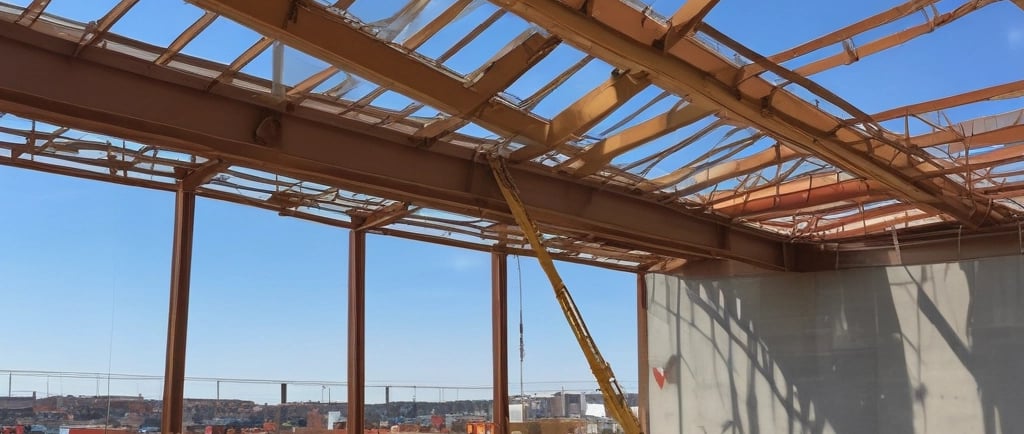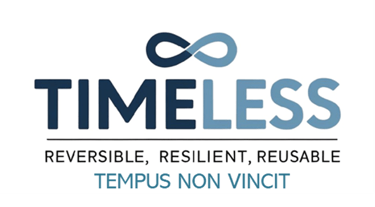Design for Disassembly: Sustainable Architecture and Circular Steel Structures
Discover how Design for Disassembly and TIMELESS’s demountable steel floors transform architecture into a circular, sustainable future.
DESIGN FOR DISASSEMBLY (DFD)
8/21/20253 min read


A new design philosophy is changing the way we build: Design for Disassembly. From everyday objects to steel structures, this approach creates adaptable, reusable, and sustainable solutions—turning permanence into circularity.
In our daily lives, we are surrounded by objects and structures that are not meant to last beyond their immediate purpose. Furniture that is glued together instead of assembled with screws, buildings designed as if they were eternal but destined for demolition, electronics sealed in such a way that repairing them becomes almost impossible. This model has shaped decades of industrial production, yet today it shows all its limits. Resources are not infinite, waste continues to grow, and the environmental cost of every product is becoming unsustainable. Against this background, a new design philosophy is emerging, one that invites us to think differently: design for disassembly.
Design for disassembly means creating with the end already in mind. It is about imagining not only how something will be used, but also how it will be unmade, transformed, and reborn in another form. A product designed for disassembly can be easily taken apart into its components, which can then be reused, repaired, recycled, or repurposed. This approach is not about fragility, but about intelligence: the intelligence to make every screw, every joint, every element part of a system that extends life rather than closes it off with disposal.
The benefits of this approach are clear. A chair designed for disassembly can have its seat, legs, or backrest replaced without discarding the whole. A smartphone designed with modularity in mind can be updated or repaired without creating electronic waste. And a building designed to be dismantled can offer materials for new constructions, instead of turning into tons of rubble. In this way, design for disassembly becomes a strategy not only of sustainability but also of economy and resilience.
One of the most interesting applications of this principle is in architecture and construction. Traditionally, buildings have been conceived as permanent structures, difficult or impossible to dismantle without destruction. Concrete poured into place, bonded with steel rebar, creates monolithic systems that cannot be separated. But what if a building could be assembled and disassembled with the same logic of a construction set? This is where steel structures come into play.
Steel is inherently suited to design for disassembly. Unlike concrete, it can be joined with bolts, plates, and mechanical connections that are strong and durable, yet reversible. A steel beam can be unbolted and reused in another project. A floor system made of steel can be disassembled, transported, and adapted to a different configuration. This flexibility makes steel superior in the logic of DfD: it transforms construction into a circular process, where materials are never wasted but continuously reintroduced into the cycle of use.
This is exactly the spirit behind the contribution of TIMELESS. By conceiving demountable floor systems, TIMELESS demonstrates that even the most static element of a building—the floor we walk on—can be reimagined as something flexible and reusable. These floors are not built to end their life in demolition, but to be taken apart, reassembled, and given new form elsewhere. It is a radical shift in perspective: permanence is achieved not through immobility, but through adaptability. What is timeless is not the object in its static form, but the possibility for it to evolve without waste.
To understand the power of this vision, it is enough to think about cities. If urban spaces are made of buildings that can change, adapt, and regenerate without consuming new land or resources, then cities themselves become living systems, capable of renewal instead of decay. Demountable structures reduce costs, shorten construction times, and most importantly, avoid the enormous environmental footprint of demolition and new material production.
Design for disassembly, in this sense, is not just a technical method but a cultural revolution. It requires us to see products and buildings not as finished, unchangeable objects, but as dynamic systems in which every ending is also a beginning. It is about replacing the logic of waste with the logic of transformation, and about embedding sustainability into the very DNA of design.
If the twentieth century was the era of permanence built on disposability, the twenty-first century must become the era of impermanence built on continuity. And this is the true TIMELESS value: to design for change, and in doing so, to create permanence through adaptability.
